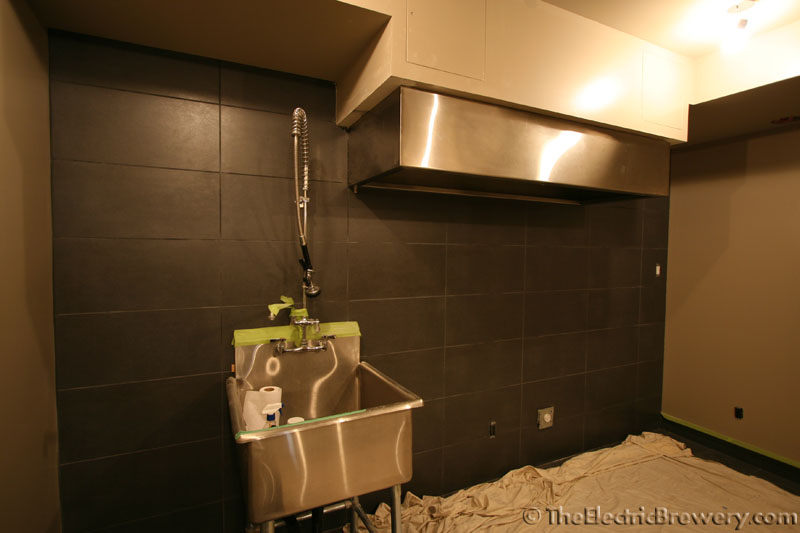I have a ventilation hood with exhaust fan in pretty much an identical configuration to Kal's electric brewery. It'll be fed by a circuit in the wall and controlled by a fan dimmer.
The walls are still open and while they are, I'm looking for a (non-dangerous) way to wire things to electively pass control of the exhaust fan over to my control panel (and hence to my computer by way of the BCS module) at will. The ceiling is also still open, but when it's closed up, the fan itself will be hidden above it.
So what I'm thinking so far is to add a second switch (on-off-on) to the wall beside the fan speed controller that's already there. "Off" is self-explanatory, and one of the "on" positions should be as well. The other "on" will redirect the circuit through a relay that is controlled by my control panel.
So it seems easy enough in theory, but I need a bit of help figuring out how to do this in practice. For instance, how the control panel will interface with the wall to get the signal and return wires to the aforementioned really. I'm also unsure of what kind of relays are okay to use in walls (eg I don't want a fire risk!), how exactly I would mount it in the wall, etc.
Aside from the added bling factor (and I expect it to be bling as possible considering the expense of this whole ebrewery-in-progress), I'd also like the ability to start heating the strike water remotely (which the BCS already easily makes possible) so that it's hit temp by the time I'm home. But to do so without simultaneously running the exhaust fan will end up putting a LOT of water into my basement... which is obviously less than desirable. Though if I'm being honest, the cool factor is reason enough for the geek that I am.
So... anybody here done something like this before (ie controlled a built-in exhaust fan with a BCS), or can otherwise at least help me with the specifics of it all?
The walls are still open and while they are, I'm looking for a (non-dangerous) way to wire things to electively pass control of the exhaust fan over to my control panel (and hence to my computer by way of the BCS module) at will. The ceiling is also still open, but when it's closed up, the fan itself will be hidden above it.
So what I'm thinking so far is to add a second switch (on-off-on) to the wall beside the fan speed controller that's already there. "Off" is self-explanatory, and one of the "on" positions should be as well. The other "on" will redirect the circuit through a relay that is controlled by my control panel.
So it seems easy enough in theory, but I need a bit of help figuring out how to do this in practice. For instance, how the control panel will interface with the wall to get the signal and return wires to the aforementioned really. I'm also unsure of what kind of relays are okay to use in walls (eg I don't want a fire risk!), how exactly I would mount it in the wall, etc.
Aside from the added bling factor (and I expect it to be bling as possible considering the expense of this whole ebrewery-in-progress), I'd also like the ability to start heating the strike water remotely (which the BCS already easily makes possible) so that it's hit temp by the time I'm home. But to do so without simultaneously running the exhaust fan will end up putting a LOT of water into my basement... which is obviously less than desirable. Though if I'm being honest, the cool factor is reason enough for the geek that I am.
So... anybody here done something like this before (ie controlled a built-in exhaust fan with a BCS), or can otherwise at least help me with the specifics of it all?




